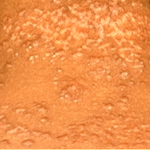Our shoulder is made up of several different structures, muscles and tendons combined with joints. This allows us to have different arm motions and thus it is prone to different types of problems and pains. Shoulder pain is one of the most common types of physical complaints. Among the different types of shoulder issues, the rotator cuff is a main source of shoulder pain. Rotator cuff keeps our arm in the shoulder socket.
Shoulder impingement syndrome is caused when the tendons impingement occurs in the shoulder from shoulder bones. Impingement results from the loss of function of the muscles of the rotator cuff which might occur from loss of strength or any injury. This type of pain is common in people who do overhead activities like tennis, swimming, painting, lifting, paper hanging, construction or any other overhead sports. It is common in both middle aged people and young athletes. Such people are also susceptible to joint and bone abnormalities.
The most common type of symptom of shoulder impingement syndrome is pain and swelling in the affected area. The pain might get worsened while lifting the arm and you may experience some stiffness. The pain may also occur while lowering the arm from an overhead position.
The beginning symptoms being mild, the patients tend to ignore the pain and generally do not seek the doctor’s advice. But along with time the symptoms tend to get worse. The symptoms may include:
- Recurring pain while reaching and lifting movements
- Minor pain may be present even at rest and with activity
- Moving pain from the shoulder front to the side of the arm
- Pain while overhead activities like throwing an object
- Difficulty in moving up behind the back
- Weakness in the muscles of the shoulder
- Pain at night especially if patient lies on the side of the affected area and disturbed sleep
- In some cases the biceps muscles get ruptured if continuous impingement occurs
- Rotator cuff tear may occur if the tendons are injured for a long time
- The rotation or shoulder movement may be limited due to pain
The best way to detect shoulder impingement is by physical examination by doctor. X-ray might not be very effective as the soft tissues are not outlined in the image. MRI may be a better option to detect the extent of damage in the tissues and bones.
There is no acute treatment for shoulder impingement but some physical treatment might help to cure it slowly. Stretching exercise helps in restoring the normal motion of the arm and shoulder. Physical therapists suggest to first removing the stiffness and pain while making any hand movements behind the back. When the movements of the rotator cuff muscles become smooth the doctor can then move on to the strengthening of the muscles. But in cases of prolonged damage if the physical treatment doesn’t work out then steroid injection can be one of the options, injection in the space beneath the acromion relieves the pain.
